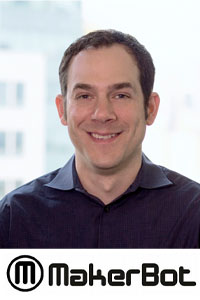
Q: I know that your North American MakerBot operations are based in Brooklyn, New York. Give us an idea of your global footprint.
A: Our manufacturing facility is in Asia, where we also have quality control and test labs that are an extension of our R&D and quality labs in Brooklyn. All hardware and software engineering takes place in Brooklyn, and the teams work closely with the technicians in Asia on new product introduction into manufacturing. Being part of Stratasys is a huge advantage for us, as well, since we can leverage their vast engineering expertise in our own development efforts, whether that be new printer designs or developing industrial materials beyond the eight we’re currently able to process.
While the United States is our largest market, we are active globally, in countries including Germany, China, South Korea, Africa, Australia, and Mexico. We have warehouses, reps, and stocking distributors around the world. All of our printers are stock models, with the only customization having to do with selecting the appropriate “print mode” and the desired materials to utilize.
Q: Looking at the four different printers you offer, could you outline in what way each model excels and/or differs, and who would benefit most from its capabilities?
A: We basically serve two primary markets: academia such as high schools, community colleges and universities, and professionals including engineers, architects, design firms, manufacturing, and industrial enterprises. With all of our printers we’ve concentrated on creating what we refer to as a “3D printing ecosystem,” where ease of use is just as important as the features the hardware and software provides.
The Replicator+ is our flagship printer for education, particularly the K-12 levels. Again, with our focus on the user experience we want the students’ introduction to 3D printing to be an accessible and welcoming experience, so we provide resources such as training, certification, and content to both the students and teachers to get the most value and learning out of the 3D printing process. Our training not only focuses on how to use the printer and software, but also explains how to leverage 3D printing to learn design skills and problem solving. As an aside, all of our printers are meant to be connected online so that updates are made automatically to keep everyone at the leading edge of new developments, and all mobile apps and print preparation software is free. The next level is the Z18, which is primarily for higher education and professional use, with a larger build volume.
Finally, we have the Method and Method X models, which we’ve invested a lot of focus and effort in developing over the past few years, optimizing them for the professional space. These printers are ideal for manufacturing facilities, machine shops, design studios, and other professional workspaces, including higher education applications in research facilities and test labs. We have seen a great deal of early adoption and are very proud of the results.
The goal was to bring many of the capabilities found in traditional industrial 3D printers into different workspaces in a way that’s accessible and easy to understand, allowing users with direct access to create industrial-grade 3D prints at an affordable price point.
Q: What do you see as the benefits graduates of these additive manufacturing programs will bring to the industrial workspace?
A: They are profound. Think about what a recent graduate just entering the job market brings with them when they are equipped with these skills. Recent grads are the ones introducing 3D printing into the workplace, since they know the value from their experience in college fabrication labs, and we see that adoption throughout engineering and design offices happens quickly once they realize this value. So that’s why we’ve placed so much emphasis on accessibility, both in terms of price point as well as ease of use. The more accessible we can make this technology, the more partners we’ll find who are interested in contributing to its advance.









































